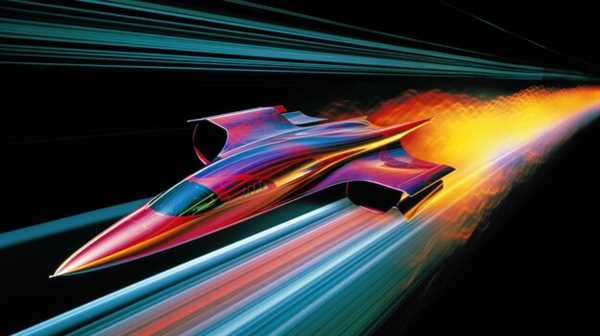From Classic Racers to Modern Machines – Motorsport Through the Decades

To truly grasp the shifts in racing technology, one must explore the profound changes in design, engineering, and performance. The transition from early automobiles, crafted for raw speed and excitement, to today’s sophisticated vehicles equipped with advanced telemetry, hybrid powertrains, and unparalleled aerodynamics exemplifies this significant transformation.
Consider the mechanics behind a 1920s Grand Prix car where power was achieved through sheer displacement and brute force. In stark contrast, contemporary racing options utilize intricate computer systems that not only optimize performance during a race but also enhance safety measures for drivers. This technological sophistication reshapes how races are conducted, impacting strategies and outcomes.
Statistical analysis of circuit performance from both eras highlights stark variances in lap times and vehicle handling capabilities. For instance, modern prototypes can achieve speeds exceeding 200 mph with stability that early racers could only dream of. Units that utilize artificial intelligence to analyze track conditions and adapt instantly illustrate the leap in racing science, showcasing the marriage of tradition and innovation.
Motorsport Evolution: Classic Racers to Modern Machines
Invest in thorough research on vehicle dynamics to bridge the gap between older and contemporary designs. Understand how advancements in materials and technology affect performance metrics. Traditional setups often relied on mechanical simplicity, while current models leverage aerodynamics and telemetry to optimize speed and handling.
Prioritize mastering weight distribution techniques used by vintage vehicles, as these principles still apply. Transitioning to modern configurations requires knowledge of electronic aids that enhance driver control and vehicle response.
Explore the historical context of engine specifications. The shift from naturally aspirated units to turbocharged engines demonstrates a significant transformation in power delivery and efficiency standards.
Engaging with motorsport heritage offers insights into tire technology. The evolution from bias-ply to radial tires has dramatically changed traction dynamics and endurance strategies.
Leveraging simulation tools can enhance a driver’s understanding of both past and current techniques. Analyzing data from classic competitions can reveal timeless strategies that remain relevant today.
Finally, consider the impact of regulations on design and safety. Reviewing how rules have shaped innovations provides clarity on the relationship between compliance and creativity in vehicle development.
Technological Innovations in Racing Vehicles Through Decades
Analyzing advancements in racing cars reveals critical changes that shaped performance and safety.
- 1920s-1930s: Introduction of streamlined chassis significantly improved aerodynamics, allowing for greater speeds on tracks.
- 1940s: Post-war innovations led to the adoption of lightweight materials like aluminum, enhancing vehicle agility.
- 1950s: Disc brakes revolutionized stopping power, giving drivers enhanced control during high-speed races.
- 1960s: The introduction of rear-engine designs shifted weight distribution, improving handling and cornering capabilities.
- 1970s: Development of turbocharging technology provided significant power boosts, particularly in Formula One.
- 1980s: Electronic fuel injection systems replaced carburetors, ensuring better fuel efficiency and optimizing performance.
- 1990s: Introduction of active suspensions allowed for real-time adjustments to track conditions, enhancing ride quality and tire grip.
- 2000s: Hybrid powertrains emerged, combining electric and combustion engines for improved energy efficiency and reduced emissions.
- 2010s: Extensive use of telemetry systems enabled real-time data analysis, giving teams insights into vehicle performance and driver behavior.
- 2020s: The rise of artificial intelligence in data processing has streamlined race strategy and vehicle tuning!
Evaluating these advancements demonstrates the interplay of technology and competition in shaping the future of racing vehicles.
The Impact of Aerodynamics on Race Car Performance

Optimizing aerodynamic design significantly enhances speed and handling. Consider implementing features like front splitters and rear wings to increase downforce without excessive drag. A classic example is the Lotus 79, which utilized ground effect to gain astonishing cornering abilities while maintaining high-speed stability.
Reducing drag is equally crucial. Smooth body shapes and fairings are essential; sharp edges disrupt airflow and increase turbulence. The Jaguar XJR-14 showcased how a streamlined profile reduced drag, resulting in higher velocities on straights.
Testing various materials for weight reduction and flexibility in aerodynamic components can yield benefits. The introduction of carbon fiber in modern designs has proven pivotal for maintaining structural integrity while minimizing weight.
Wind tunnel testing is vital for both contemporary and historical vehicle development. Accurate simulations allow teams to visualize airflow and adjust designs accordingly. Learn from classic designs while embracing innovations for your current projects.
Pay attention to the underbody as well; an often-overlooked area that can significantly influence performance. By creating effective venturi effects, classic vehicles have achieved exceptional ground clearance management, enhancing grip during aggressive maneuvers.
Finally, achieving the right balance between aerodynamics, power, and handling remains fundamental. Make iterative improvements to all components, and regularly analyze data from performance sessions to fully leverage the benefits of your aerodynamic setup.
Shifts in Racing Regulations and Their Influence on Car Design

Adjust regulations often spur significant changes in vehicle architecture and engineering. In recent years, a heightened focus on safety led to the incorporation of advanced materials like carbon fiber and reinforced cockpits, resulting in lighter but sturdier cars. Additionally, stricter emissions standards have pushed designers to innovate in aerodynamics and efficiency, prompting the integration of hybrid technologies into race vehicles.
The introduction of specifications regarding downforce and wing dimensions has transformed aerodynamics, compelling engineers to rethink airflow management, resulting in sharper, more aggressive body contours. Additionally, restrictions on tire dimensions and compounds have influenced suspension setups, requiring vehicles to adapt to varied track conditions while maintaining optimal grip.
Revisions in fuel regulations encourage manufacturers to explore alternatives, leading to advancements in energy recovery systems and fuel efficiency, fundamentally altering engine design. This has led to the emergence of turbocharging as a common feature, dramatically shifting power delivery characteristics.
Furthermore, as digital telemetry has become integral to racing, designers must accommodate sophisticated data acquisition systems to enhance real-time performance analysis. This integration dictates the use of lightweight electronics and advanced software in vehicle architecture, directly impacting layout and weight distribution.
Each regulatory shift not only defines competitive strategies but also shapes the future trajectory of automotive design, ensuring that each iteration remains at the forefront of technological innovation.


